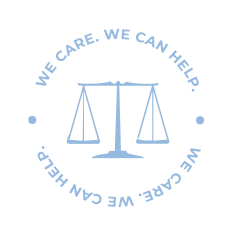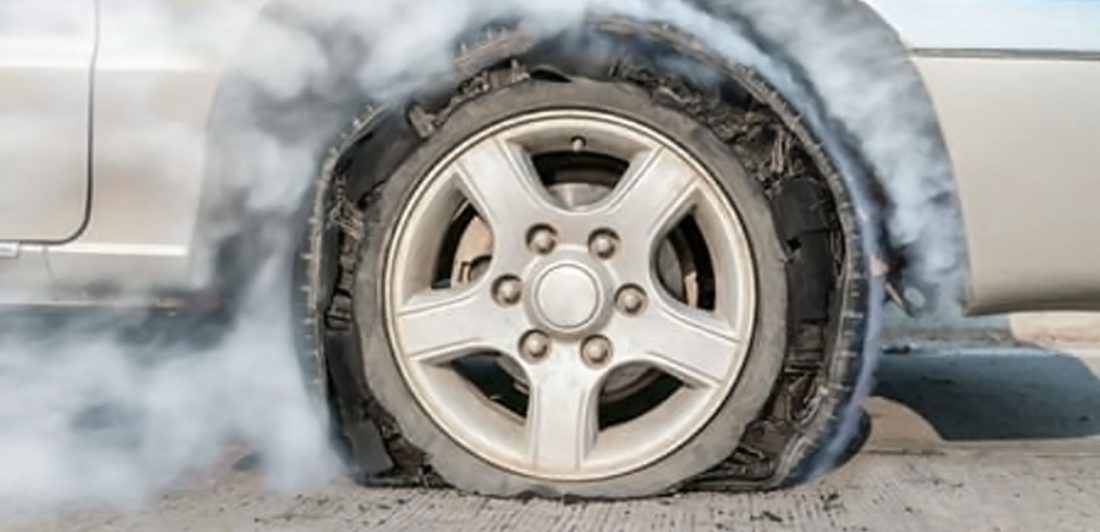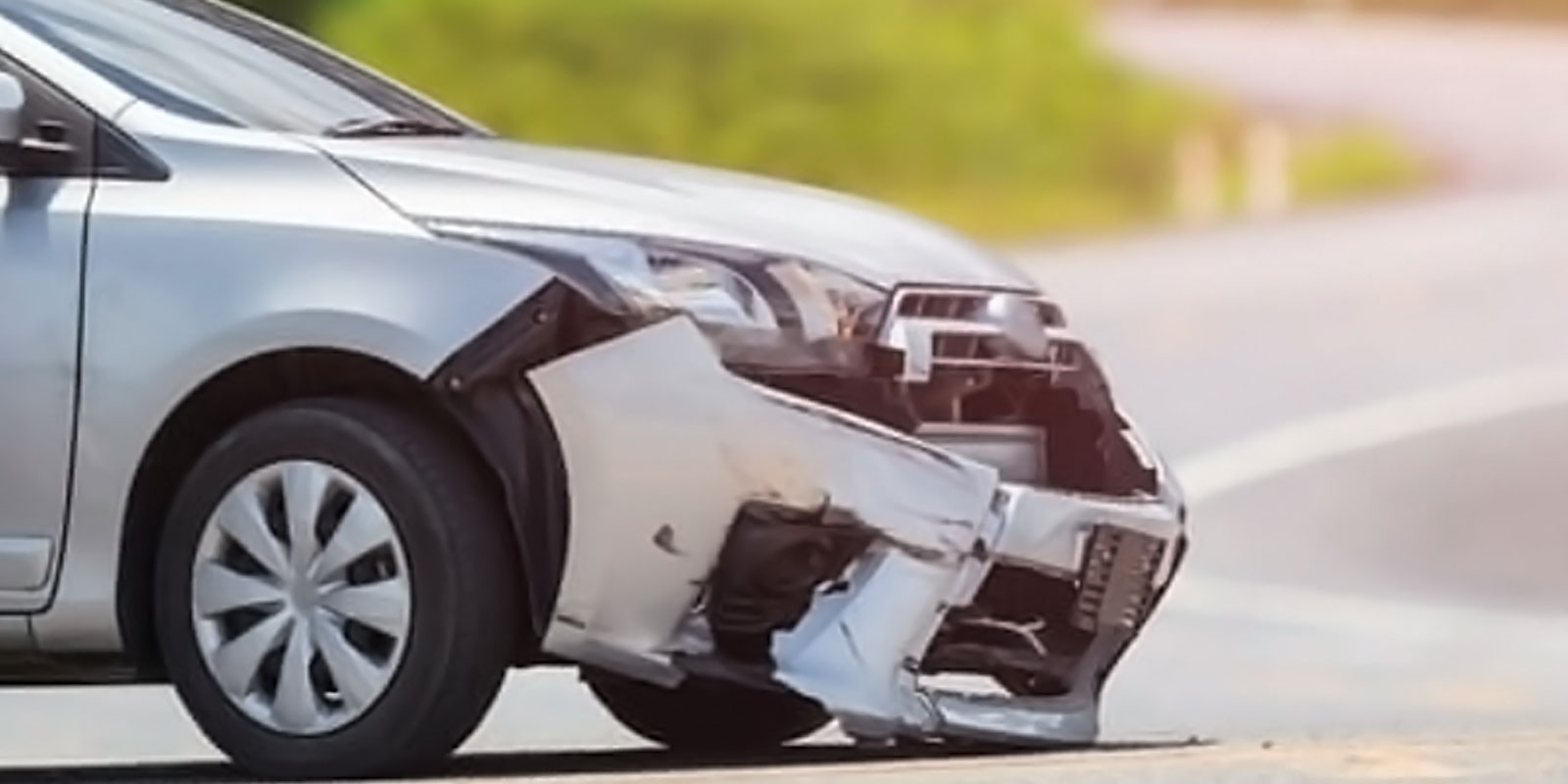It is common to see pieces of a tire scattered across the highway. Many of us would think this is due to excessive wear. However, this is also a sign of a defective tire that blew with no warning, putting everyone on the road in danger.
The National Highway Traffic Administration (NHTSA) estimates that in 2017 there were 738 total motor vehicle traffic fatalities in tire-related crahses. Tire blowouts could lead to crashes leaving drivers, passengers, and even nearby pedestrians seriously injured.
Common causes of tire failure
Tire failure can occur in the manufacturing process, at the body shop, tire shop, or it may be a result of conditions that you can control or avoid. Some common examples are:
- Tread separation
- Tread and steel belt separation
- Tire made without all specified components
- Belt and ply losses
- Improper puncture repair
- Tire not suitable for vehicle
- Sidewall failure
- Retread failure
- Tire damaged during the mounting process
- Manufacturing defects
- Tires that look good but are old
Understanding why tires fail
Tires are the most critical safety component on a vehicle. Because of this, unexpected tire failure can have serious consequences, especially if it occurs at high-speed. Tire failure occurs when there is a defect or weakness in the material or design of a tire. Many times, the heat caused by driving at high speeds will affect the weak areas of the tire and lead to a rupture. Some of the most common defects that result in tire failure include:
Tread separation
A common cause of tread separation comes from design defects or manufacturing defects. When steel belting fails to bond correctly with the tread, it has the potential to create defects that result in separation. If tread separates, it is often followed by a complete tire blowout leaving the vehicle destabilized and prone to a rollover collision.
Tire blowout
Our vehicles depend on four tires to support its weight along with our weight and the weight of all our belongings. Air can escape rapidly, causing the tire to lose its inflation and its ability to support a car.
Manufacturing errors
During the manufacturing process, structural defects can produce poor adhesion of tread and belts that may potentially result in blowouts.
Faulty mounting procedures such as not using bead lubricant on a rim can be damaging to tires. The tire needs to be positioned correctly to prevent bead damage and leaks that can occur from improper seating. If the tire changing machines are in poor conditions, they may damage the tires creating a potential problem on the roads.
A faulty tire stem is another mistake that causes defective tires. Sometimes tires appear to be fine, and all of a sudden they separate, go flat, or lose air unexpectedly.
The use of old or poor quality materials during manufacturing can result in weak tires. It is especially dangerous to travel with brittle tires at high speeds.
Some tire manufacturers try to cut costs and maximize profits by designing tires with fewer layers of material instead of layers of steel, nylon, rubber, and liners with substances to prevent degradation of the other components.
Final inspections in tire plants should be taken seriously. The final inspection should take about two minutes per tire. However, some plants take as little as 15 seconds per tire.
Injuries caused by defective tires
Being involved in a collision due to a defective tire is scary because the outcome is unpredictable. The defective tire may cause you to lose control and slam into another vehicle or cause your vehicle to roll over. Regardless of what type of collision occurs, injuries are likely in defective tire crashes. Some common injuries are:
- Neck injuries
- Back injuries
- Fractures
- Lacerations
How to recognize a bad tire
Tire defects are obvious in some situations, and others are hard to determine with an untrained eye. Below are potential signs of faulty or bad tires to look for.
- Unusual tire vibration
- Uneven tread depth wear
- Cracks or splits in the sidewall
- Blisters or bulges on the tire
- Rapid deflation for no reason
- Lack of traction
- Wobbling of tire
- Tire rim flange markings
Preventing tire blowouts
Taking time to check your tires to ensure they are safe may save you from experiencing a tire blowout. Proper inflation is vital for your tires. Check the tire pressure and make sure your tires are inflated to the recommended PSI. Keep in mind that too much inflation is just as dangerous as too little inflation.
If you feel vibrations while you are driving, don’t take a risk, have your car checked by a mechanic. Set up a routine to check your tires at least once a month and look for signs of damage and defects such as:
- Fabric breaks
- Cuts and cracks in the rubber
- Bumps or bulges due to internal damage
- Visible or damaged cord
Do I need a Tire Defect Lawyer?
The evidence is going to be key in this type of case. It is critical that you consult with a Tire Defects Lawyer as quickly as possible to preserve any salvageable evidence. An experienced attorney will understand evidence will enable them to build a strong case. If it is found that defective tires were the cause of the collision, you will have the right to recover losses such as pain, suffering, lost wages, and other losses. The company or manufacturer that was negligent will have their own attorneys and insurance company trying their hardest to shift liability and leave you with an undervalued settlement. You don’t have to go through this stressful process on your own.
How The Carlson Law Firm can help
If you or a loved one was harmed due to defective tires, don’t hesitate to contact The Carlson Law Firm. If we find that defective tires were to blame, we will battle any obstacles and fight for maximum recovery. We have a team of attorneys, on staff nurses and private investigators ready to fight for maximum recovery on your behalf. We are available to you 24/7. We care, we can help.
Contact us today for a free case evaluation.





